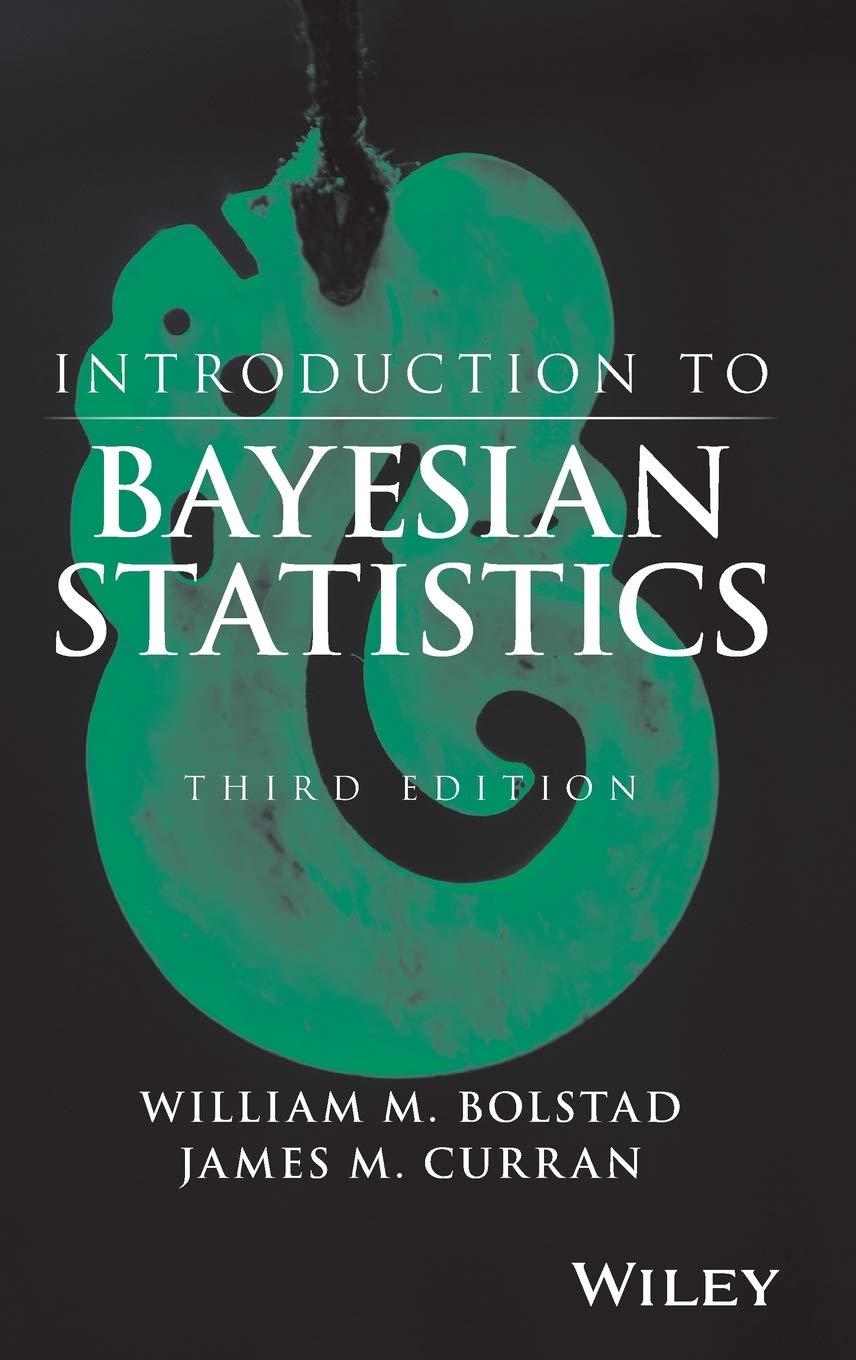Suppose there is an urn containing 20 green balls and 30 red balls. A single trial consists
Question:
Suppose there is an urn containing 20 green balls and 30 red balls. A single trial consists of drawing a ball randomly from the urn, recording its color. This time the ball is not returned to the urn. The experiment consists of 4 independent trials.
(a) List each outcome (sequence of 4 trials) in the sample space together with its probability. What do you notice about the probabilities of outcomes that have the same number of green balls.
(b) Let \(Y\) be the number of green balls drawn. List the outcomes that make up each of the following events:
\[
Y=0 \quad Y=1 \quad Y=2 \quad Y=3 \quad Y=4
\]
(c) What can you say about \(P(Y=y)\) in terms of number of outcomes where \(Y=y\), and the probability of any particular sequence of outcomes where \(Y=y\).
(d) Explain what this means in terms of the hypergeometric distribution.
Step by Step Answer:

Introduction To Bayesian Statistics
ISBN: 9781118091562
3rd Edition
Authors: William M. Bolstad, James M. Curran





